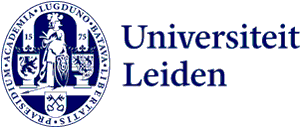
Archaeologists of the future dig for traces of the past
Forty archaeology students are holding a shovel somewhat awkwardly in the fields at Oss. This is their first day of fieldwork and they are going to use muscles they didn’t even know they had. But it’s not all work and no play: ‘It’s like school camp but better.’
This is the first time the students have used a shovel on an archaeological dig and for some of them it’s taking a bit of getting used to. ‘Guys, it looks like you’ve created a moonscape,’ says assistant professor Mark Driessen to three first-year students who have left a rather bumpy patch of ground. ‘Don’t scoop at it like an ice cream. You need to scrape. Think about how you’d use a knife to get margarine from a tub. You wouldn’t hack at that, would you?’
Middle Ages and prehistory
Oss has been the site of archaeological research for almost 50 years now. This municipality in the province of Brabant has a medieval past, and people were already living in prehistory and during the Roman Empire where there are now new housing estates. Houses will be built in a few years’ time on the spot where the students are digging. Although this is their first time in the field, these future archaeologists are taking part in real research.
Anyone expecting pottery, utensils or parts of houses to emerge from the soil will be disappointed. To the uninitiated, the ground still looks like a sandpit after the excavation. But the students can see from the discolouration in the ground whether there was once a well, house or burial mound (as other students discovered last year).
-

Students scrape sand away with their shovels. -

The black discolouration shows there was once a water pit here and the black stain may indicate a hollowed-out tree trunk once stood here. -

This is the students’ first time in the field. -

The tools are ready to hand.
Jumpers off, sore muscles on
You have to dig with care if you want to see the discolouration. The students start off in long-sleeved jumpers but are soon shovelling away in short sleeves with Sjefke shovel, Marie-Louise, Pumba Mr Bean or Dobby: the shovels have all been given names by their owners. It’s hard work and there’s the odd bout of puffing, stretching and reaching for the lower back. Most of the students expect to have sore muscles the next day.
Assistant professor Maaike de Waal is supervising the group in Oss: ‘A hundred and twenty students are learning the basic steps of fieldwork these weeks. Most of them have spent all year looking forward to it. Some arrive only to discover that they don’t like fieldwork at all whereas others come into their own. Either is good to experience.’

Dig once and then it’s gone
Laura had thought it would soon get boring because she knew she’d only be finding traces rather than objects. ‘But I’m enjoying it much more than I’d thought because more and more is emerging. If you understand what you see, everything is interesting. It’s tricky because you have to dig straight down but for me it’s gone all bumpy.’ Lisanne adds, ‘It’s more fun than lectures or seminars. You learn so much more.’ And Julian says, ‘It’s fun to be working on a real dig. And knowing you won’t find any objects takes away the stress of ruining things.’
At the start, each group of a few students was given its own patch to dig. A few hours in and they have dug so close towards each other that it’s a tightrope walk not to tread on each other’s excavated sections. That is a big taboo because then you can’t take good photos and make good drawings. This documenting after you have dug is important because you can only excavate traces once and then they’re gone.
After a day in the fields, the students, many of whom are friends, are staying nearby. ‘It’s a bit like school camp but better’, says Laura.
Send us your photos and stories of your time in Oss
Next year is the 50th year of archaeological excavations in Oss. We want to write an article to celebrate this anniversary and could use your help. Many of our archaeology students and staff have helped out in Oss. If you have any photos or fun stories from your time in Oss, send them to us at nieuws@leidenuniv.nl.
-

An archaeologist of the future tries to scrape the soil as evenly as possible. -

Assistant professor Joanne Mol gives the students instructions. -

It’s a bit of a tightrope walk to make sure you don’t tread on each other’s excavated areas. -

It’s important to take photos after you’ve finished digging.
Text: Dagmar Aarts
Photos: Rob Dorresteijn
Translation: Marianne Orchard
